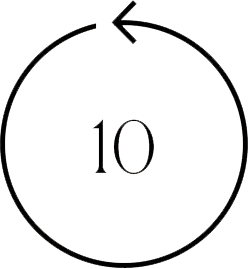Interview
October 2019
Carlotta
De Bevilacqua
A Light Within
Photo: Pierpaolo Ferrari
Architect, lighting designer, and entrepreneur Carlotta de Bevilacqua is a luminary in her field. She is the Vice President & CEO of the legendary Italian industrial design house Artemide and of its subsidiary division Danese Milano, making significant contributions to the fields of photonic research, the investigation of the emission, transmission, amplification, detection, and modulation of light. In our conversation, we discuss the impact of place and history in shaping one’s identity, the transformative power of light, mindful design, and the importance of human connection and empathy.
Rimma Boshernitsan: Not only are you Italian, you are a lifelong Milanese. You were born and raised in the very place that has been known for nearly a century as you mentioned, ‘the West’s epicenter of design innovation’, and you still live, work, and teach there to this day. Do you feel that you or your work has been informed by Milan and its unique legacy, or does it go beyond this?
Carlotta de Bevilacqua: Of course, I’ve been influenced by Milan—anyone who is Italian has. Conversely, anyone who is from Milan has also been deeply influenced by Italian culture, the legacy of Rome, and before that, the Greeks. We’ve all been influenced by where we come from, and where we come from has been influenced by multiple sources in our collective culture. That truth isn’t unique, it’s universal. Your question was about Milan and me and my work in relation to the cross-cultural legacy to which I have the closest access, so, do I feel as though my work, and by extension me, has been informed by Milan? The answer is an emphatic “Yes!”
Milan has always been at the heart of the design culture, not least because of its proximity to manufacturing districts that made it possible to implement ideas developed in this environment. Milan and its relationship to design is analogous to Silicon Valley and its relationship to tech—both are places where design culture and corporate culture exist in an open relationship. Milan’s cultural character is unique: It’s the true value of Italian design—a distinct combination of scientific and technical skills, and human wealth—which is capable of creating a knowledge economy through beauty and the emotion of innovative products as concrete, real-world responses to the needs of the world, human, and otherwise. It thrives on a cross-disciplinary approach that is deeply rooted in Italian history going back centuries, even millennia. There are so many recognizable people from history I could cite as proof of this, or notable examples, but for quick recognition I’ll reference Leonardo da Vinci, who was an engineer, a painter, an inventor, and a scientist. Scientific thinking combined with a humanist approach gives life and makes space for true innovation, and to me this is the most meaningful part of design, in terms of my projects.
RB: Your mother was a practicing architect while you were growing up. Do you feel your mother’s career influenced your own? How do you see that this played out in your own life?
CdB: My mother is a character. She’s still an architect, and she is 90. Sometimes, people ask if her work as an architect inspired me to be an architect, and I have to disappoint them and say no; I didn’t choose to become an architect because of my mother. It wasn’t that I wasn’t intrigued or impressed by her gifts and by what she did, because I was, but I was motivated by different things. My mother is one of the most elegant women I’ve ever known in my life and one of the most well-read. She was proud of this and militant about education, both in her own continued absorption of information and determination that her children develop the same reverence and excitement for learning as she had. It worked, although I developed slightly different values and ambitions.
I chose architecture because I was really invested in the idea of design for humanity, for creating a more beautiful and progressive world. I wanted to help better society and improve humanity’s common future. I am a product of the 1960s and ‘70s, and my mother is from a different generation with more traditional, conservative ambitions. We both value beauty, but we work in very different ways. I am very lucky to have grown up in the family that I did. I was given nearly limitless freedom because I was given an excellent education, which enables freedom. I grew up in Milan, surrounded by the legacy one of the richest, most influential cultures in the world. As for whether anyone else in my family is an architect, the answer is yes—my daughter. Three generations!
RB: I feel that, to you, beauty and freedom are inextricably linked and part of who you are. It seems like everything you’ve made, and everything you practice, is ultimately devoted to freedom and choices, and creating freedom and choice, from the very start.
CdB: Yes, and education. I am devoted to freedom and education.
RB: You began your career in a more traditional vein, designing buildings and houses. Was there something particular about light, or its absence in architecture, as most of us understand it, that pulled you away from the field? Or, do you see your work now as an extension of your original path?
CdB: I had designed many buildings and villas. When I became interested in light, everything changed. I was always interested in being part of transformations, and light is one of the ultimate transforming agents, so when I focused on researching and working with light itself, instead of creating built environments, I found my calling. There is, of course, a relationship to architecture, and I have that, but it’s the interplay in the relationship itself—what is created and changed by way of light—that I’m interested in.
RB: You have a rare relationship with Artemide Group founder Ernesto Gismondi in that you are partners twice—in marriage and in business. What has allowed you both to be together as life and business partners over the decades? What is it like to work together and overcome obstacles together?
CdB: Ernesto is my life mate. Since I met him, I have been in touch with design, not just in terms of architecture, but also products and corporate work. He is an engineer, Artemide’s founder, and a fearless entrepreneur with formidable business strengths. He has taught me a lot. Everything he does is closely tied to the act of “doing,” whereas I have more of a flair for innovation and research. I live to explore the perceptive relations between light, sustainability, and technological innovation. We are a good complement to one another.
RB: How did you and Ernesto meet?
CdB: It’s a little cinematic, but it’s entirely true: I met Ernesto on the steps outside an exhibition opening at the Triennale de Milano. I was going down the steps and he was coming up, our eyes met, and he became the light of my life. He was so nice, and we understood each other almost at once.
RB: In an interview with editor of the publication, Compasses, Marco Farretti, you said there was a moment of true and distinct change at Artemide in the 1990s, when you decided not to produce lamps, but to design light. Aside from this being a lyrical phrase, it’s a very pronounced statement. What was the socio-cultural context, and were there any technological factors in play when you came to this decision, that influenced this shift? Did this shift impact you on a personal level?
CdD: Since the very beginning, light and its relationship with humans and space has always been central to Artemide, as both its heart and art. One example is Eclisse, from 1967, which was designed by Vico Magistretti. The early 1990s saw the birth of the Artemide “Human Light,” which had a campaign where light, rather than the product itself, played the leading role. Also, in the 1990s, we started working with colored light, like in our series entitled “Metamorfosi.”
Some people have noticed that I used to call our creations lights and not lamps, and I suppose the word difference is important to me, but what’s most important is the light. You can call it an object, a light, or whatever you want. With naming, I ultimately don’t want to be involved; I want to be involved in the science behind what is happening.
Photonics is the true revolution in the lighting sector. Light is made of wavelengths, as well as of energy, composed of finite particles, or quantums, called photons. Light is invisible, makes the world visible, interacts with life, and can now transmute data, information, and intelligence. Light is life.
RB: In addition to serving as Vice President and CEO of Artemide and Danese Milano, you are a member of the design faculty at Politecnico di Milano, your alma mater. How do you transfer your knowledge to your team and partners, as opposed to how you do so with your students? Do you feel you have to re-translate yourself or your work between these separate spheres, or is it all interrelated to you? What are some pieces of wisdom you’re willing to share with young people just starting their own projects or stepping into positions of leadership?
CdD: I see myself as an explorer in search of beauty—not one singular beauty, but all the beauties—before any one job title, and this lets me be more or less the same essential person in both industry and academia. For me, light is everything, and everything is interrelated. Consequently, I try to transmit my passion for research equally in all areas of my life, whether it’s as a professor or to members of my team. One needs to be curious, insightful, humble, open to sharing wisdom, and willing to work collaboratively with people of different skill sets. If you can do these things, you can do many things for the world.
RB: I’ve noticed during our time together how facile you are with history and ancient languages. Have you always been like this? Sometimes, people say that being Italian sets you up for having a sense of appreciation of culture and scope.
CdB: Perhaps there’s some truth to that, or perhaps it’s an enjoyable fiction. I am very much aware of one thing: Since I have studied some boring foundational classics and learned Greek, I notice their imprints everywhere. Like with aesthetics—it is an open word, aesthetics. It has properties that somehow become enacted when you read or say it. The word aesthetic in Greek means perception, but there’s also a physical component as well. Humans don’t only perceive with their eyes, they literally feel things. Aesthetic is exactly the perception of what you are seeing, doing, or experiencing as it happens.
RB: At this point, I would normally ask you what your definition of happiness is—but after hearing you talk about your work, life, and values, I’d rather ask what your greatest wish is. What do you want to leave as your legacy, and/or do you think about leaving a legacy?
CdB: In terms of my greatest wish, I’m still figuring that one out, but what’s very high on my list is that I would like to be an inventor, always.
In terms of a legacy, I would really like to see the future through with the younger generations, to stay with them and listen and be helpful. Listening to different generations than your own, particularly younger generations, is critical. We need to support the young—sometimes the super-young—because they are the voice of the future, and they are going to change things for the better if we don’t squash them down first.
I know without a doubt that our younger generations are going to save the world, or at least improve it. When I listen to them, it’s incredible how insightful and determined they are. They are really involved in designing the future on a very deep and heartfelt level, and I am determined to do all I can to help them succeed.








